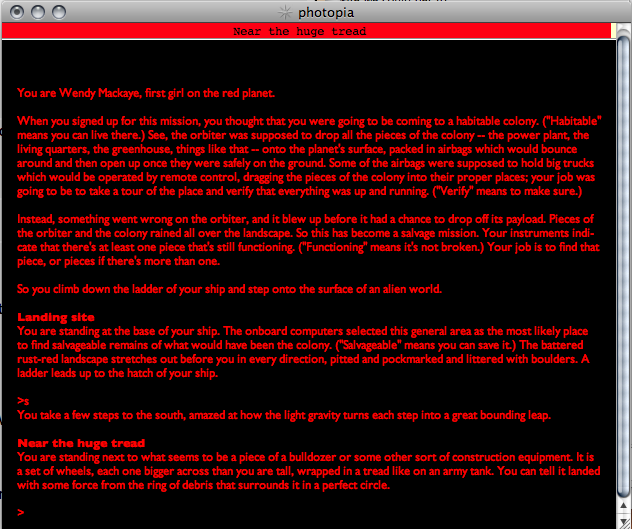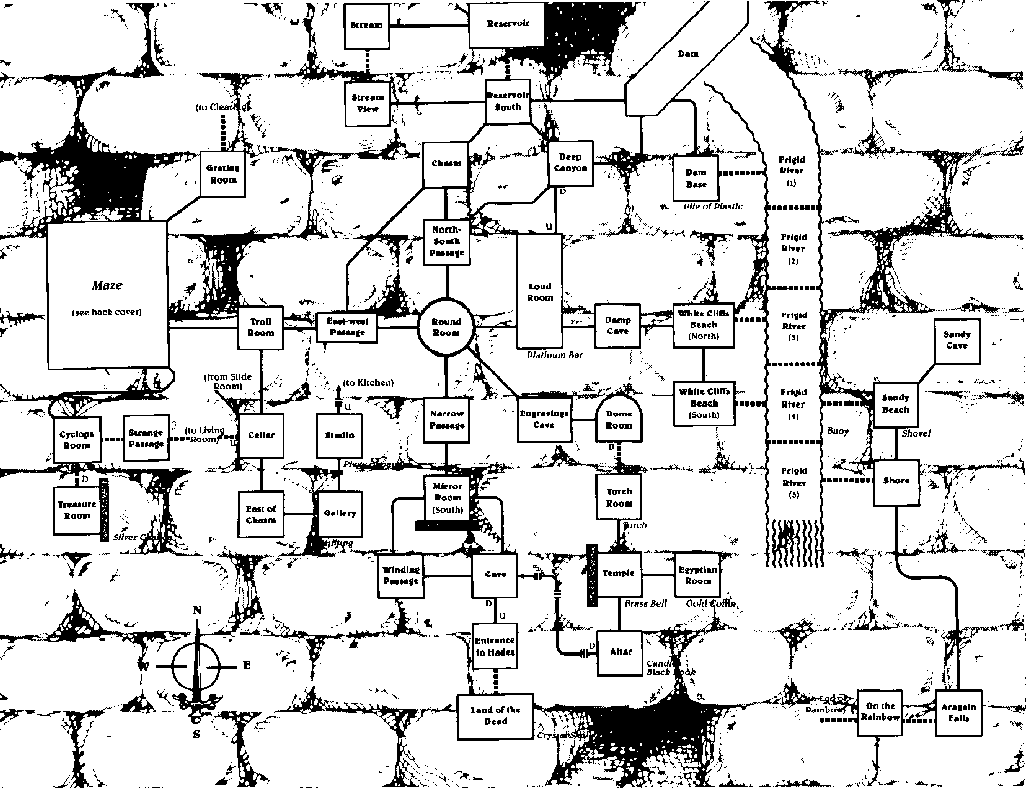Many of the stories recommended on this web site are similar in a number of ways. Most include puzzles that kids like, most are not especially difficult as works of literature, and all have happy endings. Indeed, many have been crafted explicitly for young readers.
Adam Cadre’s masterful IF novella, Photopia, is entirely different. It includes no puzzles in the usual sense of the term, drawing in students and other readers in a variety of creative and compelling ways. It is so challenging as literature that even experienced readers sometimes ask whether its final scene can really be the end of the story. It is an extraordinarily sad tale whose main character is a middle school student–sad enough to warrant an early warning from the teacher that this is not a happy tale. And it is not targeted at kids–in fact, some teachers who use it may choose to censor some profanity that appears in its first brief scene.
Photopia is simply inaccessible to most pre-college readers when they are working independently; but, with the right kind of guidance, the same students can enjoy the story and learn a great deal from it. The teacher’s approach, however, must vary considerably from other classroom approaches to interactive fiction.
Though Photopia offers no puzzles of the usual sort, it is a puzzling tale, in that it challenges the reader to determine how several apparently disparate plot threads are integral parts of the same story. Students can help themselves to follow these plot threads by listing each scene of the story on paper, so that the plot threads can eventually emerge and be integrated. The story helps with this procedure by associating a series of colors with the scenes that constitute one of the principal plot threads. Also, since the story’s point of view shifts from scene to scene, the author has implemented a “Who am I?” command.
For each scene, students can profitably record the results of the “Who am I?” query, the color associated with the scene, if any, and a brief description of the action. As they look back at their writings about the scenes, the students will find it fairly easy to identify three plot threads by the time they reach the half-way point of the story. One of these will consist of just one scene, involving two drunken college students who cause a traffic accident. The second, combining several color-associated scenes, tells an apparently-unrelated science-fantasy tale; and the third offers a number of episodes from the life of Alley Dawson, a very kind and bright young girl. Eventually, students will be able to see how all three threads constitute a single tragic plot.
Photopia has gained a reputation as one of the finest work of IF ever created. It is surely challenging for both teacher and student, but it works well in the classroom, and it is more than worth the effort that it demands.
Photopia is available, in several versions, at the Interactive Fiction Database (http://ifdb.tads.org). The “Competition Version” is the only one that contains profanity in the opening scene.



